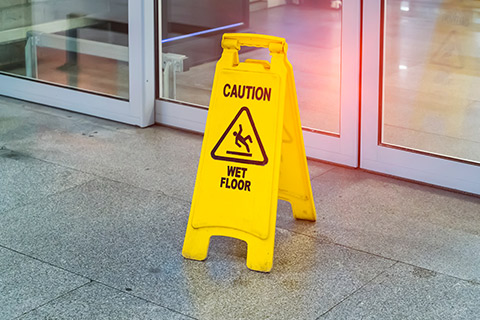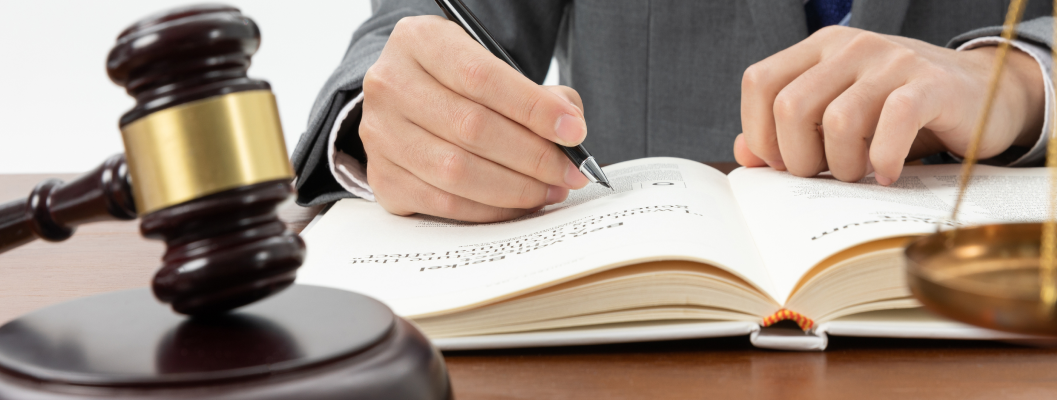Texas Slip and fall Injury Lawyer
Injured in a Slip and Fall Accident? Trust Our Experienced Texas Lawyers to Fight for You
Understanding Slip and Fall Accidents in Texas
Slip and fall accidents are a leading cause of injury in Texas, affecting countless individuals each year. These incidents can occur in a variety of settings, from grocery stores and restaurants to workplaces and private residences. While some falls result in minor bruises, others can lead to severe injuries that have long-lasting impacts on your health, finances, and overall quality of life.
In Texas, property owners and occupiers have a legal obligation to maintain safe premises for visitors. When they fail to address hazardous conditions, they may be held liable for any resulting injuries under premises liability law. Understanding your rights and the legal framework surrounding slip and fall accidents is crucial for seeking fair compensation and holding negligent parties accountable.
At D. Fox Law, our experienced attorneys are dedicated to helping victims of slip and fall accidents navigate the complexities of Texas law. We are committed to providing personalized legal support to ensure you receive the justice and compensation you deserve.
Common Causes of Slip and Fall Accidents
Slip and fall accidents can happen unexpectedly and are often the result of negligence on the part of property owners or managers. Recognizing the common causes can help you identify whether negligence played a role in your accident and strengthen your claim.

Your Legal Rights After a Slip and Fall Accident
Under Texas law, if you’ve been injured in a slip and fall accident due to someone else’s negligence, you have the right to seek compensation for your damages. Understanding the legal principles involved is essential for building a strong case and maximizing your potential recovery.
Premises Liability and Property Owner’s Negligence
Premises liability law holds property owners and occupiers responsible for maintaining safe conditions on their premises. To establish negligence, you must demonstrate that:
- The property owner knew or should have known about the hazardous condition. This can be shown through evidence of prior complaints, maintenance records, or the length of time the hazard existed.
- They failed to repair, remove, or adequately warn you about the hazard. Reasonable steps include fixing the issue promptly or providing clear warnings to visitors.
- Their negligence directly caused your injuries. You must link your injuries directly to the unsafe condition and the owner’s failure to address it.
Property owners are expected to exercise reasonable care in inspecting and maintaining their property. Failure to do so can make them liable for accidents that occur as a result.
Legal Status of the Visitor
Your legal rights may depend on your status while on the property:
- Invitee: Someone invited onto the property for business purposes, such as a customer in a store. Property owners owe the highest duty of care to invitees, including regular inspections and prompt hazard remediation.
- Licensee: A person who enters the property for their own purposes, with the owner’s consent, like a social guest. Owners must warn licensees of known hazards that are not obvious.
- Trespasser: Someone who enters without permission. Property owners owe a minimal duty not to intentionally harm trespassers but may not be liable for injuries unless certain exceptions apply.
Understanding your status can influence the legal obligations of the property owner and the viability of your claim. An attorney can help clarify how these distinctions affect your case.

Comparative Negligence
Texas follows a modified comparative negligence rule. This means that if you are found partially at fault for your accident, your compensation may be reduced by your percentage of fault. For example, if you are deemed 20% responsible, your compensation would be reduced by 20%. However, if you are more than 50% at fault, you cannot recover any damages.
Insurance companies and defense attorneys may try to attribute some or all of the fault to you. It’s important to have an experienced attorney who can help minimize any claims of comparative negligence and advocate for your right to compensation.
Statute of Limitations
In Texas, you have a limited time to file a personal injury lawsuit. The statute of limitations for slip and fall accidents is generally two years from the date of the incident. Failing to file within this timeframe can result in the loss of your right to pursue legal action, regardless of the merits of your case.
Acting promptly ensures that evidence is preserved, witnesses can be contacted, and your case is filed within the legal deadline. Delays can weaken your case and limit your options for recovery.
Steps to Take After a Slip and Fall Accident
Taking the appropriate steps immediately following a slip and fall accident can significantly impact the outcome of your case and your ability to recover compensation.
-
Seek Medical Attention
Your health and safety should be your top priority. Even if you believe your injuries are minor, it’s essential to get evaluated by a medical professional. Some injuries may not manifest symptoms right away, and medical records provide crucial evidence linking your injuries to the accident.
-
Report the Incident
Notify the property owner, manager, or an employee about your accident as soon as possible. Request that an official incident report be completed and obtain a copy for your records. This documentation can serve as important evidence in your claim and demonstrates that the property owner was made aware of the incident.
-
Document the Scene
If you are able, take photographs of the area where you fell, focusing on the hazard that caused your accident. Capture images of any warning signs (or lack thereof), lighting conditions, and the overall environment. This visual evidence can be invaluable in demonstrating the property’s unsafe conditions.
-
Collect Witness Information
If anyone witnessed your fall, obtain their names and contact information. Witness statements can support your account of the incident and help establish the property owner’s negligence. Witnesses can also corroborate the existence of the hazard and the lack of warnings.
-
Preserve Evidence
Keep the clothing and footwear you were wearing at the time of the accident. These items may be examined to determine if they contributed to your fall or if they were appropriate for the conditions. Avoid altering or cleaning them until after consulting with your attorney.
-
Avoid Making Statements
Be cautious about what you say at the scene and afterward. Do not admit fault or make detailed statements about the incident without consulting an attorney. Additionally, refrain from discussing the accident on social media, as these posts can be used against you by insurance companies or opposing counsel.
-
Consult an Attorney
Contact an experienced slip and fall injury lawyer as soon as possible. An attorney can guide you through the legal process, protect your rights, and help you pursue the compensation you deserve. Early involvement allows your attorney to investigate promptly and preserve critical evidence.
How Our Texas Slip and Fall Lawyers Can Help
At D. Fox Law, we understand the challenges you face after a slip and fall accident. Our dedicated team is committed to providing comprehensive legal support tailored to your unique situation. We strive to alleviate the burden of the legal process so you can focus on your recovery.
Free Consultation
We offer a no-obligation case evaluation to discuss the details of your accident and answer any questions you may have. This initial consultation allows us to assess the merits of your case and advise you on the best course of action.
Thorough Investigation
Our attorneys will conduct a detailed investigation into your accident. This may include:
- Gathering and preserving evidence from the scene.
- Reviewing surveillance footage, if available.
- Obtaining maintenance records and prior complaints about the property.
- Consulting with experts in fields such as engineering or safety to analyze the hazard.
This thorough approach helps build a strong case by establishing the property owner’s negligence and your right to compensation.
Proving Liability
We work diligently to demonstrate how the property owner’s failure to maintain safe conditions led to your injuries. This involves:
- Establishing that a hazardous condition existed.
- Proving that the owner knew or should have known about the hazard.
- Showing that they failed to take reasonable steps to address it.
By effectively proving liability, we aim to hold the responsible parties accountable and maximize your potential recovery.
Maximizing Compensation
Our goal is to help you recover the full extent of damages you are entitled to, which may include:
- Medical Expenses: Current and future costs related to your treatment.
- Lost Wages: Income lost due to your inability to work.
- Pain and Suffering: Compensation for physical pain and emotional distress.
- Rehabilitation Costs: Expenses for physical therapy or long-term care.
- Loss of Earning Capacity: If your injuries affect your ability to earn income in the future.
We negotiate aggressively with insurance companies and are prepared to take your case to court if a fair settlement cannot be reached.
No Upfront Fees
We operate on a contingency fee basis, which means you pay nothing unless we secure compensation for you. This arrangement allows you to pursue your case without the added stress of legal fees, focusing instead on your recovery.
Frequently Asked Questions
Can I Recover Damages If I Was Partially at Fault?
Yes, under Texas’s modified comparative negligence rule, you can still recover damages if you are less than 51% at fault for the accident. However, your compensation will be reduced by your percentage of fault. For example, if you are found to be 30% at fault, your total compensation will be reduced by 30%.
It’s crucial to have skilled legal representation to minimize any allegations of fault on your part. Our attorneys can help present evidence that supports your claim and challenges any assertions that you were responsible for the accident.
How Long Do I Have to File a Slip and Fall Lawsuit in Texas?
You have two years from the date of the accident to file a personal injury lawsuit under Texas law. This statute of limitations is strictly enforced, and missing the deadline can result in losing your right to pursue compensation.
To ensure your case is filed timely and to preserve crucial evidence, it’s advisable to consult an attorney as soon as possible after your accident.
What If the Property Owner Claims They Were Unaware of the Hazard?
Property owners are expected to perform regular inspections and maintain their premises. If a hazardous condition existed long enough that the owner should have discovered it through reasonable diligence, they may still be held liable.
An experienced attorney can help gather evidence to refute claims that the owner was unaware of the hazard. This may include:
- Demonstrating that the hazard was present for a sufficient duration.
- Showing that similar complaints or incidents occurred previously.
- Highlighting a lack of proper maintenance or inspection protocols.
Contact Our Texas Slip and Fall Injury Lawyers Today
If you’ve been injured in a slip and fall accident, don’t face the aftermath alone. The experienced attorneys at D. Fox Law are here to help you navigate the legal system and fight for the compensation you deserve.
We understand the physical, emotional, and financial toll such accidents can take, and we’re committed to providing compassionate and effective legal representation.
Take the first step towards securing your rights. Call us today.

